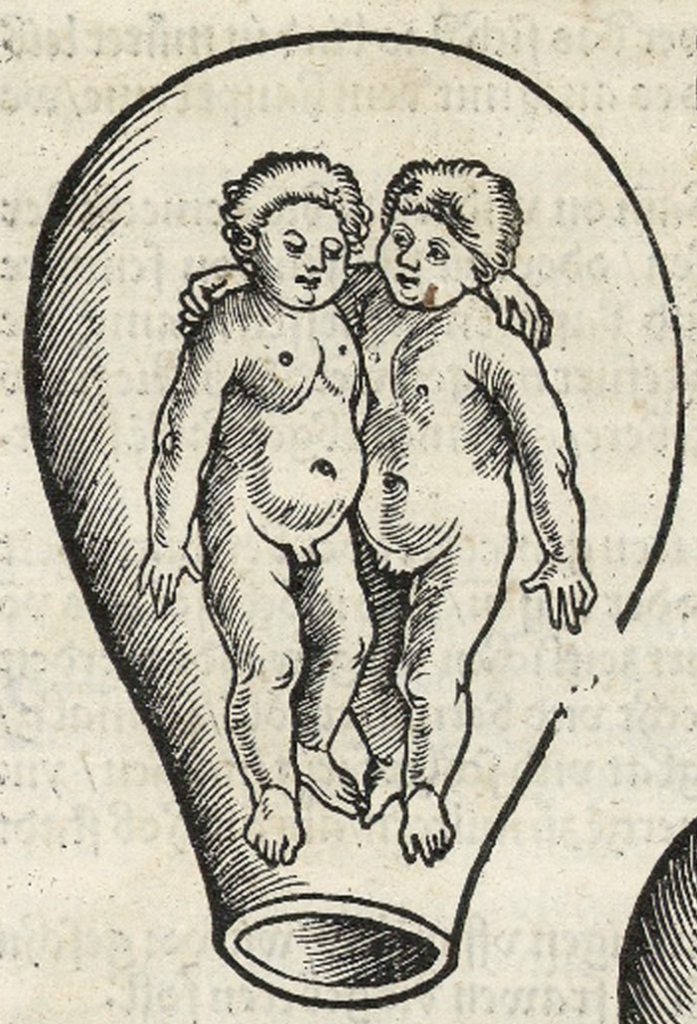
Rosegarten, 1513. Source
in which Meredith and i respond to the tale The Two Brothers as collected by the brothers Grimm
i was surprised at the length of the story: could it have stopped after the twins reached apprenticeship? so much magic had already happened! they had a trade, they found gold pieces underneath their pillows each night, their evil uncle showed no hint of pursuing them. done! but not. so many themes to explore:
- number two/doubles/twinning: two brothers, twins, two pieces of gold, father and foster father, shooting two wild geese, figure-two formation of geese, two sets of helper animals, double-edged sword
- numbers more generally: five kinds of helper animals, seven dragon heads
- dismemberment, headlessness, initiation
- truth and lies/deceit
- feasting, eating, ingesting magical food
- materials (wood, gold, stone) and flesh (tongues, guts)
- role of women, women’s tactics (deceit, delay, counsel)
- the forest, enchantment, imaginal realm
- time: twenty-four hours to find and administer the magical life-giving root, a year and a day’s delay to the wedding
- trials and proof
i will say some more about the last in the list. there is much trouble taken for trials and proof. the dragonslayer takes great pains to make a proper entrance to the castle. the practical thing to do would be to walk up to the gate, say you have proof that you killed the dragon, and voilà. but he wishes to eat and dress properly, which prepares him for his future kingly role (“…now I have eaten and drunk, as the King eats and drinks, and now I will go to the King’s court and marry the King’s daughter.”) this also seems to prove to him that the maiden he saved had kept him alive in her heart.
the twins need to prove their hunting mastery by shooting two wild geese as they fly above in two different formations (side note, rather than the number two, the second formation noted in the book is called a “key formation” in polish: klucz). there is also the proof of the five beasts’ collars, made from the princess’ necklace. the proof of the seven dragon tongues. the tale ends with the proof of the sword removed from the conjugal bed.
there is a lack of proof: the evil brother eat the whole damn golden bird, but no gold pieces fall from his pillow when he wakes the following day.
why do we obsess over truth, accuracy of communication, fidelity? why are we so afraid our deed, pronouncement, spell, etc won’t “land”, won’t be proven? is this about fear of uncertainty, the unknown? is it a separation fear?
in what way are twins related to the concept of proof? how were twins even viewed in medieval times? my guess is with suspicion. little bit of a rabbit hole skimming this essay on The Significance of Twins in the Middle Ages, which confirms my guess. twins were risky to birth, and raise. and yet they appear frequently in fairy tales (they are, after all, a key constellation). why are the protagonists twins, and not just brothers that look alike? their mother is never mentioned. in the article linked to above, we learn that some medieval sources attributed the twin phenomenon to a woman’s excessive sexual appetite–she must have lain with two men, she is more like a beast that gives birth to a litter.
i see i am more interested in twins and twos, than in proof.